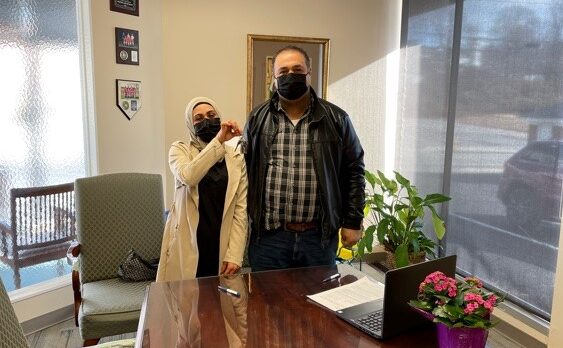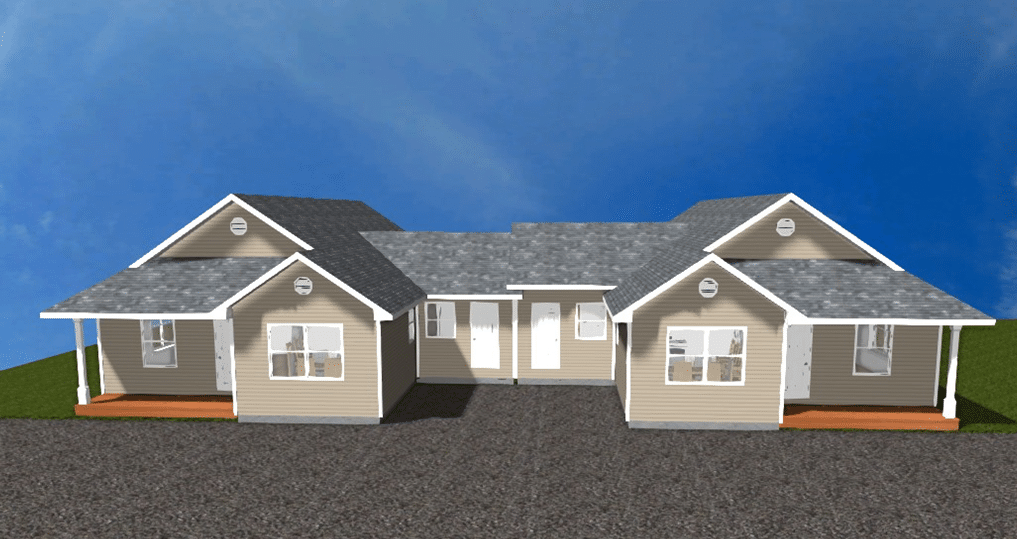The process of applying for the Habitat Homeownership program can seem overwhelming.
We want to make it a little easier for you by helping you plan ahead for the next application session.
Keep reading to learn more about our program and make sure it is a good fit for your current needs and situation. There are also some helpful hints for preparing to apply.
To get started, we invite you to do a little homework using the quick link buttons below to familiarize yourself with the Habitat Homeownership program.
Quick Links
Ready to get started?
If you’ve reviewed the information and you’re ready to get started preparing to apply to the program, here’s what you can do next:
-
-
- Start collecting paperwork: the pre-qualification packet is step one in the process and requires you to submit specific information and copies of certain documents. Download the checklist HERE and get started organizing your paperwork so you know where everything is when it is time to apply.
- Review your credit history and clean up loose ends: if you have accounts in collection it is time to pay them off and close the accounts. If you’ve paid off accounts and they still show a balance, contact the company to have it removed from your report.
- Get caught up on bills: if you are late paying bills, it’s time to put together a plan to bring everything current. Not only will you eliminate late fees, but you will also improve your eligibility for the program.
-
If these three steps feel overwhelming or even impossible we invite you to contact Connecticut Association for Human Services (CAHS) and take advantage of their three-month one-on-one financial coaching program. There’s more information about them below – keep reading!
- What if I have a lot of debt?
- During the application process, we evaluate and consider the debt the applicant has accumulated. This is to ensure that the debt load is not a financial burden to buying the home. If you have debt, we suggest that you put together a plan and begin paying down that debt.
- There are a few suggestions below that address debt-to-income ratio. It is important to know what your credit history is, so we suggest pulling a free credit report once a year. Knowing what is on your credit report will help you to begin clearing up some of your past debt and improve your financial picture. We suggest using Annual Credit Report. After you download your credit report:
-
- Look at each credit account listed on the report.
- Learn how to understand your credit report and what errors to look for using these helpful tips.
- Understand what we mean by the term “debt-to-income ratio” by reading this article here.
Then begin addressing your debt by paying off balances and making on-time payments for each account. Making on-time payments is just as important to maintaining good financial health as paying down high balances.
Are you looking for more financial education resources?
We know that understanding how to manage household finances can be confusing, sometimes frustrating, and time-consuming. This is why we’ve put together some resources to choose from that will help. If you are interested in purchasing a home, your financial health is important to know and understand before you apply for a mortgage.
Programs with one-on-one services:
-
-
- Call Thames Valley Council for Community Action (TVCCA) at 860-889-1365 and ask for information on financial counseling. There are other assistance programs that might be helpful for your situation, too, you just have to ask them for what you need.
- Visit the Connecticut Association for Human Services website for financial coaching information. This is a 3-month one-on-one program that will address your specific situation and help you meet your financial goals. You can also contact Tori Hamilton directly: thamilton@cahs.org
-
Programs with self-directed online learning:
-
-
-
- The National Endowment for Financial Education is a great place to start your learning. Check out their Initiatives page for all their education resources. If you want a workbook you can download, the Your Spending, Your Savings, Your Future workbook.
- Chelsea Groton Bank offers free online resources on a variety of topics, including financial planning and debt management.
- Kahn Academy is a nonprofit agency that offers free online videos to learn more about budgeting, finances, and debt (in addition to thousands of other topics). Follow this link to take a look at their Personal Finance program and begin to learn more.
- If reading isn’t your thing, find a podcast to listen to. Keep your notebook handy so you can take notes and write down ideas for how you will implement the new skills and achieve your financial literacy goals. We really like The Budgetnista, if you’re looking for somewhere to start. You can even find her on YouTube.
-
-
Always look for the free resources that people and pages offer. There’s plenty of free information available, so never feel pressured to pay for a service when you’re doing online research and learning new financial skills.
- I’ve paid down most of my debt, so now what?
- One important habit to get into is creating a budget and sticking to it. There are endless ways to create a budget and manage your expenses. The system that you choose depends on many things, the most important is what you are comfortable with and what you will continue to practice. There are a series of self-directed learning resources here that we suggest looking into.
“Money management is a multilayered concept that if applied correctly, can start anyone on the road to financial freedom. The topic of wealth in the black community has become the center of discussion, especially among black millennials.” Read More
We also encourage you to start a savings account and have clear goals set for how you will manage the money. Perhaps it is a vacation fund, an education fund, or an emergency fund. Saving can be a tough habit to get into but will help your overall financial wellness if that is your goal. Understanding how to save and avoid getting into too much debt is an important skill to learn before purchasing a home.
Some apps can make it easier to save by automatically debiting your account. If that sounds like it would work for you, here is an informative article to understand how apps work and how they can support your savings goals.
Experts suggest having three months of living expenses in a savings account for an emergency fund. To learn more about what an emergency fund is and how to create one, we suggest reading this article.
OK, I’m ready! I want to be a Habitat Homeowner!
That’s great! We look forward to meeting you during our next application round (typically in March and September). It is important to know a few more things in preparation for applying to be a Habitat Homeowner.
Download the checklist so you know what documents you’ll need to have ready for your application here.
Also:
-
- Habitat’s Homeownership Program is a long-term solution to homeownership. The program typically takes between 12 and 24 months to complete. Once a homeowner purchases their home, we begin a 30-33-year relationship as homeowners pay down the mortgage.
- If you are looking for short-term or immediate housing solutions, please visit our community resource page here and/or call 211 from any Connecticut phone.
- Each Habitat for Humanity program selects homeowners who currently live in their service area. Habitat for Humanity of Eastern Connecticut serves all of New London and Windham counties, as well as six southeast towns in Tolland County. Click here to view a map of our service area.
- If you don’t live in our service area, find out if you are eligible for the Habitat for Humanity program in your area by clicking here to find your local affiliate.
- To clarify any remaining myths and misunderstandings, we’ve created this article to help explain more about how Habitat works.
We’ve given you a lot to think about and work on between now and the next open application session. Stay focused on your goals and take things one day at a time.
Have questions? Need a little guidance?
Call us any time: 860-442-7890 ext. 201



